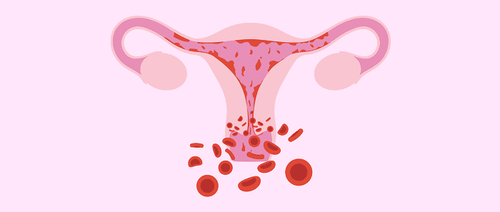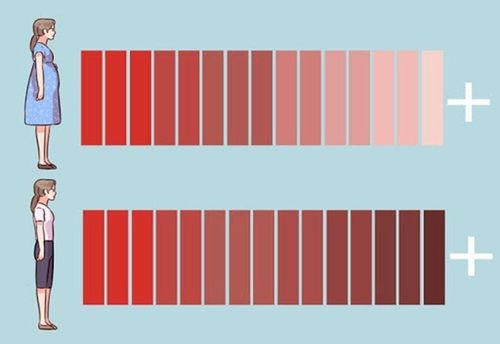This is an automatically translated article.
Ask
Hello doctor! I gave birth to a baby more than 2 months ago but the discharge is still bright red blood. I went to the doctor, the wound was normal, the ultrasound of the uterus was clean. So the doctor asked me what to do 2 months after giving birth, still bleeding a lot of bright red blood? How is the treatment? Ask your doctor for advice. I would like to thank the doctor.
Bach Le, 1991
Reply
Hi there. To advise you: "What's wrong with having a lot of bright red blood 2 months after giving birth?", the doctor would like to send you the following information:
Postpartum period is the time when the organs return to normal. anatomically and physiologically (except for the developing breast to produce milk). During pregnancy, the sex organs and breasts develop gradually, after giving birth, they will return to their normal state as if they were not pregnant. This period lasts about 42 days from the day after giving birth, in non-breastfeeding women, menstruation may return.
Clinical phenomena:
Uterine contraction After delivery, the uterus is 13cm high above the pubic joint, on average, the uterus contracts 1cm per day, the first day can be 2-3cm faster and after birth 12 - 13 days, the fundus of the uterus is not visible on the joint.
Because there are still blood clots and fluid in the uterus, sometimes the uterus has strong contractions to expel blood clots and secretions, causing pain in the uterus. The quality of the uterine muscle is still good, the uterus is always tight.
Uterine pain is common in pregnant women, the degree of pain is more or less depending on each person's feelings, but the more times you give birth, the more painful it is because the quality of the uterine muscles is weaker, the uterus needs to contract strongly. than the previous times to push the clots and fluid out. Sometimes, these uterine pains require pain medication because the intensity is too strong.
In some women, these pains can last for days. Uterine pains, especially during breastfeeding, can also be caused by the release of oxytocin. Usually the pain decreases in intensity and the mother feels comfortable on the 3rd day postpartum. After delivery, it is necessary to monitor uterine contractions by measuring the height of the uterus, from the pubic joint to the fundus of the uterus.
Uterine contraction depends on:
In humans, the uterus contracts faster than in humans. Women who give birth often contract faster than those who have a caesarean section. Breastfeeding people contract faster than non-breastfeeding people. An infected uterus contracts more slowly than an uninfected uterus. Urinary retention, constipation after childbirth, the uterus is pushed up and the contraction is slow. Clinically, if the uterus is slow to contract, the uterus is still enlarged and painful, the patient has fever, foul discharge, it is necessary to think of postpartum infection.
Semen is fluid from the uterus and genital tract that flows out during the first days of the postpartum period. Composition The discharge is made up of clotted blood and thin blood flowing from the uterine lining, especially from the placenta, fragments of ectopic ectoplasm, and epithelial cells in the cervix and vagina. degenerative degeneration.
During the first 3 days, the fluid is full of thin blood and small clots, so it is dark red. From the 4th to the 8th day, the product is thinner, only a mucus mixed with a little blood, so it has a faint color of fish blood. From the 9th day on, the epidemic is only a clear one.
Normally, there is never any pus in the discharge, but when it passes through the vagina, vulva, the discharge loses its sterile nature and can be contaminated with pathogenic bacteria.
Odor: Postpartum discharge has a strong fishy odor, alkaline pH, if it is infected, it will have a bad smell.
Volume: Varies depending on the person. In the first 10 days, on average, the discharge can be up to 1500g, especially on the first day and the second day, it can be up to 1000g. In the following days, the discharge is less and less, after 2 weeks, the discharge will be completely gone.
In the first child, the discharge disappears quickly because the uterus contracts more quickly. In a caesarean section, the discharge is usually less than in a vaginal delivery.
Clinically, 3 weeks after giving birth, some women may bleed a little, which is premature menstruation due to early recovery of the uterine lining. If you do not breastfeed, you may have your first period again after 6 weeks postpartum and that is also the end of the postpartum period, the first menstrual period is often more frequent and longer than normal periods.
Lactation If you do not breastfeed, you may have your first period again after 6 weeks postpartum and that is also the end of the postpartum period, the first menstrual period is often more frequent and longer than normal periods Menstruation may return and this first period is usually longer and heavier than usual.
During this period You should follow:
Hygiene, exercise, nutrition regime Do not bathe in drafty places, soak in a water bath because the cervix is still open. It is necessary to avoid intercourse during the postpartum period because it is easy to cause infection. Eat enough, abstain from stimulants such as alcohol, tea, coffee, tobacco... Get enough sleep to quickly recover health and have enough milk to feed your baby. Wearing mode: loose, clean, airy clothes, do not wear clothes that are too tight. Exercise mode: Gentle exercise can be done to avoid constipation; helps to eat well and make the abdominal wall muscles recover quickly to normal. One week after giving birth, you can do light work. Avoid heavy labor, carry heavy bags in the postpartum period to avoid causing genital prolapse. You can go to reputable medical facilities or one of the hospitals of Vinmec Health System nationwide soon for more specific advice on the condition of bleeding 2 months after giving birth.
Thank you for trusting and sending questions about Vinmec. Best regards!
Please dial HOTLINE for more information or register for an appointment HERE. Download MyVinmec app to make appointments faster and to manage your bookings easily.
Answered by Master, Doctor Le Nhat Nguyen - Doctor of Obstetrics and Gynecology - Department of Obstetrics and Gynecology - Vinmec Da Nang International Hospital














